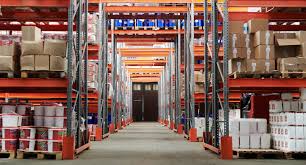Your company cannot function without inventory. Maintaining just-right stock levels to meet consumer demand while avoiding excessive storage fees is essential. An inventory management system is useful for this purpose. The perpetual inventory system is a trustworthy tool for maintaining a constant stock count. In this article, you’ll find out what a perpetual inventory system is and how it functions.
Perpetual Inventory System
A perpetual inventory system is one that never stops counting stock. Unlike a periodic inventory system, which only takes stock at predetermined intervals, nevertheless, this one monitors stock levels in real time. Because they always reflect the current stock level, perpetual inventory systems are more reliable than periodic ones. Better choices can be made about ordering, production, and particularly price using this data. The implementation of a perpetual inventory system can take many forms. Barcodes and radio frequency identification tags are often used for this purpose. Barcodes or RFID tags are scanned at the point of sale, allowing for automatic adjustments to be made to stock levels. A computerized inventory system is another option. Orders, shipping, and stock levels can all be identically monitored via this system. Businesses can gain a lot from using a perpetual inventory system. Some of the advantages are:
1. Since perpetual inventory systems provide stock levels in real time, they are more reliable than periodic inventory systems. Better choices can be made about ordering, production, and price using this data.
2. Cost savings from avoiding both overstocking and understocking are a major benefit of perpetual inventory systems.
3. Perpetual inventory systems enable organizations to provide better service to their customers by keeping them up to date on stock levels at all times. This can help stores keep their shelves stocked and satisfy their clientele.
4. Perpetual inventory systems help firms save time and effort by automating many of the procedures traditionally associated with managing stock levels. Employees may then have more time to devote to other initiatives.
5. In sum, firms can gain from perpetual inventory systems in a number of ways. Accuracy gains, cost savings, service enhancements, and productivity gains are just a few of these advantages.
Perpetual Inventory System: An Overview
Because perpetual inventory systems provide real-time tracking of sales and inventory levels for specific items and help to prevent stock out, they may be preferable than outdated periodic inventory systems. The company’s accountants do not need to manually change a perpetual inventory, unless it differs from the actual inventory count due to loss, breakage, or theft. Because perpetual inventory systems cannot account for loss, breakage, or theft, periodic inventories are needed. Through the use of barcode scanners or other electronic records of product acquisition, sales, and returns as they happen, system software offers real-time changes to inventory. This data is added to a perpetual database and updated. The system supports integration with teams in finance and accounting, among other areas. This promotes compliance with tax laws and other rules. Perpetual inventory data can be used by staff to accurately inform customers about availability of goods, spare parts, and tangible components.
Journal Entries Perpetual Inventory System
Journal entries perpetual inventory system transactions example
An entity employs perpetual inventory, the entity bought $24,000 inventory on account on June 12. Document this transaction. This is a typical input for Journals entries perpetual inventory system
[Journal Entry]| Debit | Credit | |
| Inventory | 24,000 | |
| Accounts payable | 24,000 |
Notes
Debit: Increasing stock
Credit: An increase in payables
Inventory purchases made over the term are noted in the “Inventory” account under a perpetual inventory system. When inventory is bought and sold, the inventory account is continuously updated in a perpetual inventory system.
You’ll probably find yourself journalizing transactions when working with inventory accounting. The most frequent journal entries that you’ll require to account for your inventory are listed below.
#1. Buying Products at Wholesale Prices
Merchandise purchases must reflect in the books, with a debit to inventories and a credit to accounts payable:
#2. AP Compensation Fees
Now, it’s crucial to have a reliable payment system in place because the timing of invoice payments can make or break your company. The supply sources and vendor connections for your firm may suffer if bills are not paid on time. Additionally, it could create the impression that your company is having trouble with other outsiders, damaging reputation and confidence. Contrarily, an organized approach helps you avoid late payment penalties, enhance cash flow, and keep good working connections with suppliers.
#3. Credit Conditions
Products are typically purchased on credit from wholesalers and manufacturers. The bill or invoice from the vendor should clearly state the payment terms. Let’s pretend for the purpose of argument that on April 1st, the corporation uses credit to buy $2,000 more in goods, agreeing to pay for them in two installments of $10 each, with payment due in full 30 days later. The buyer has 30 days to pay back the seller, although a 2% discount is available if the money is transferred in the first 10 days. Now, with the available discount of 2% off the invoice price, Company XYZ registers their purchases at a net cost of $1,940. This transaction will be recorded as such by the company:
#4. Merchandise Sales
One journal entry is needed to acknowledge the sale, and another is needed to record the costs of products sold, when a business sells merchandise.
#5. AR Collection
Customers that purchase goods and services from you on credit owe you money, which is known as accounts receivable. All of the outstanding bills or money that your customers owe you are included in your accounts receivable. Your company’s financial statement includes accounts receivable as an asset. Maintaining the sound financial condition of your company depends heavily on your ability to appreciate the significance of accounts receivable. It’s always advised to keep your accounts receivable in good shape. Even if you have a large customer base, it can be disastrous for your business if they are not paying you on time or at all.
Periodic and Perpetual Inventory System
Different methods and procedures for documenting inventory are needed for perpetual and periodic systems, despite the fact that the two can work together. Products are constantly monitored by staff in a permanent system. Products are only recorded at regular intervals in a periodic system. There’s no denying that a perpetual system is more difficult to manage than a periodic one, what with all the extra data that needs to be tracked and stored. According to Muller, “the fundamentals are the same — regardless of your approach” when thinking about the system you wish to utilize. If there is a flaw in the core system, no amount of fancy software will save you from making the same mistakes more quickly. Decisions concerning the system would be informed by factors like the perishability of your goods and how they must be physically handled (such as size and amount of storage space they require).
How your business takes delivery and stores the merchandise also affects its character. Some products are unitized because their components are small and they are stored in separate containers. A perpetual method works well for big businesses or those with a lot of inventory. A periodic method can often help small businesses that don’t have a lot of inventory stay in business. The same is true for the margin for error, which is smaller with a perpetual system, but a small, simple inventory might not be affected much by a periodic system. An essential accounting indicator, cost of goods sold (COGS) is arrived at by adding the opening inventory balance to the cost of purchasing inventory and deducting the closing inventory cost. With a real inventory, the COGS is updated every so often. Overall, a perpetual inventory system is easier to use.
Examples of Perpetual Inventory System
Some examples of perpetual inventory systems include:
- Point-of-sale (POS) systems: These systems track inventory levels as items are sold.
- Warehouse management systems (WMS): These systems track inventory levels as items are moved in and out of a warehouse.
- Enterprise resource planning (ERP) systems: These systems track inventory levels across all aspects of a business, including sales, production, and purchasing.
Perpetual inventory systems are more accurate than periodic inventory systems because they track inventory levels on a real-time basis. This allows businesses to better manage their inventory and avoid stockouts or overstocking.
Wireless barcode scanners in supermarkets are the most typical implementation of a perpetual inventory system. It keeps a real-time log of all scanned transactions in the system. In this approach, businesses won’t have to guess about how much goods they need or have on hand.
What Is the Perpetual Inventory Formula?
The perpetual inventory formula is:
Ending Inventory = Beginning Inventory + Purchases – Sales
This formula can be used to calculate the ending inventory of a company at the end of an accounting period. The beginning inventory is the value of the inventory that a company has on hand at the beginning of the accounting period. The purchases are evidently the value of the inventory that a company has purchased during the accounting period. The sales are the value of the inventory that a company has sold during the accounting period. The perpetual inventory formula is a useful tool for businesses to track their inventory levels and to ensure that they have enough inventory on hand to meet customer demand.
What Is Perpetual Inventory and What Are the Reasons for It?
Perpetual inventory is a continuous accounting method that accurately reflects actual stock in the book inventory by continuously recording inventory changes without the need for physical inventories. POS systems and scanners are input devices used in warehouses to record perpetual inventory.
What Are Two Features of a Perpetual Inventory System?
The mechanism of perpetual inventory is rather intricate. As long as no things are stolen as well as damaged, inventory changes are accurate and easily accessible right away. As each sale is made, the COGS account is likewise regularly updated. A perpetual inventory system is a way to keep track of inventory without having to manually enter each purchase or sale. The software in this system basically tracks a change in inventory levels in real-time for each transaction that occurs.
What Are the Two Advantages and Disadvantages of the Perpetual Inventory System?
Pros
Instantaneous feedback. As its name suggests, a perpetual system constantly refreshes sales data. Both management and staff can keep an eye on these metrics and use them as they see fit in real time.
Improved capacity for foresight. Important benefits of a perpetual inventory system include tracking consumer buying patterns and seasonal swings and the opportunities this information affords.
Cons
Lack of inventory. This may occur as a result of theft, spoilage, or physical damage. A loss occurs when there is a difference between the estimated perpetual inventory and a subsequent physical inventory.
Poor record-keeping for stock. Problems with the scanning, the loss of inventory, the software, or the human operators can reduce the efficiency of a perpetual inventory system.
Which Is a Characteristic of a Perpetual Inventory System?
A perpetual inventory system generally is a stock-tracking method that instantly and automatically records stock purchases and sales. The software in this system keeps track of inventory levels in real time and updates them after each transaction.
Conclusion
Ecommerce organizations that are significantly experiencing rapid expansion are ideal candidates for a perpetual inventory system. A system that takes an inventory just once in a while has a greater risk of inaccuracies and less effective stock control. You are explicitly able to centralize the management of your inventory, optimize your stock levels, and do much more with the help of a permanent inventory system.
Related Posts
- PERIODIC INVENTORY SYSTEM: What It Is & How It Work
- 365 MOBILE INVENTORY: A Guide to 365 Retail Markets Mobile Inventory
- BEST RESTAURANT INVENTORY MANAGEMENT SOFTWARE 2023
- TOOL INVENTORY SOFTWARE: Best 11+ Equipment & Tool Inventory Software 2023






